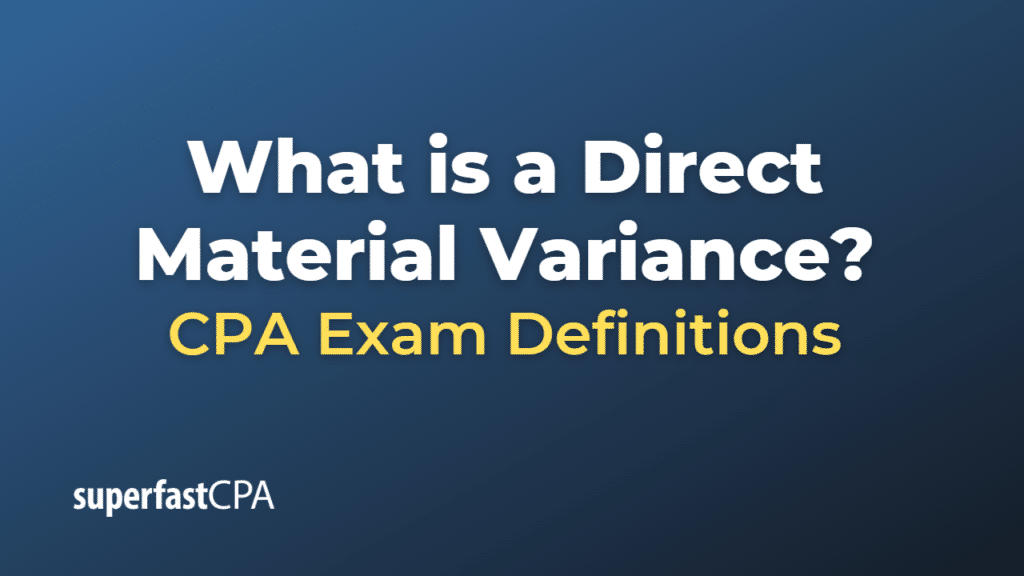Direct Material Variance
Direct Material Variance refers to the difference between the actual costs of the direct materials used in the production process and the standard costs that the company expected to incur. This measure is used in standard costing, a part of cost accounting, to help a company understand cost behavior and control its production expenses more effectively.
Direct Material Variance can be broken down into two main types:
- Direct Material Price Variance: This measures the difference between the actual cost per unit of direct materials and the standard cost per unit, multiplied by the actual quantity of materials purchased. It helps to identify if a company is paying more or less for its materials than it had planned.
- Direct Material Usage Variance (or Quantity Variance): This measures the difference between the actual quantity of materials used in production and the standard quantity that should have been used, multiplied by the standard cost per unit. It helps to identify if a company is using more or fewer materials in its production process than it had planned.
The sum of the direct material price variance and direct material usage variance equals the total direct material cost variance.
These variances are used to identify inefficiencies, wastages, or changes in market prices, helping the management to take corrective actions to control costs. Both favorable and unfavorable variances provide important feedback about operational efficiency.
Example of a Direct Material Variance
Let’s consider a hypothetical example of a company that manufactures widgets.
The standard cost of the material required to produce one widget is set at $10, and it should ideally use 2 kilograms of material per widget.
Suppose that during one production period, the company manufactures 1,000 widgets. They find that due to market conditions, the actual cost of material has gone up to $12 per kilogram. Moreover, due to some inefficiencies in the production process, they end up using 2.1 kilograms of material per widget.
Here’s how we would calculate the variances:
- Direct Material Price Variance:
Material Price Variance = (Actual Price per Unit – Standard Price per Unit) * Actual Quantity Used
= ($12/kg – $10/kg) * 2.1 kg/widget * 1,000 widgets
= $2/kg * 2.1 kg/widget * 1,000 widgets
= $4,200
This is an unfavorable variance because the actual costs are higher than the standard costs. - Direct Material Usage Variance:
Material Usage Variance = (Actual Quantity Used – Standard Quantity) * Standard Cost per Unit
= (2.1 kg/widget – 2 kg/widget) * $10/kg * 1,000 widgets
= 0.1 kg/widget * $10/kg * 1,000 widgets
= $1,000
This is also an unfavorable variance because the company used more materials than expected.
The total direct material variance is the sum of these two variances, which is $4,200 + $1,000 = $5,200. This unfavorable variance indicates that the company’s actual material costs were $5,200 higher than what they had planned for. The management can use this information to investigate the reasons and take corrective actions.













